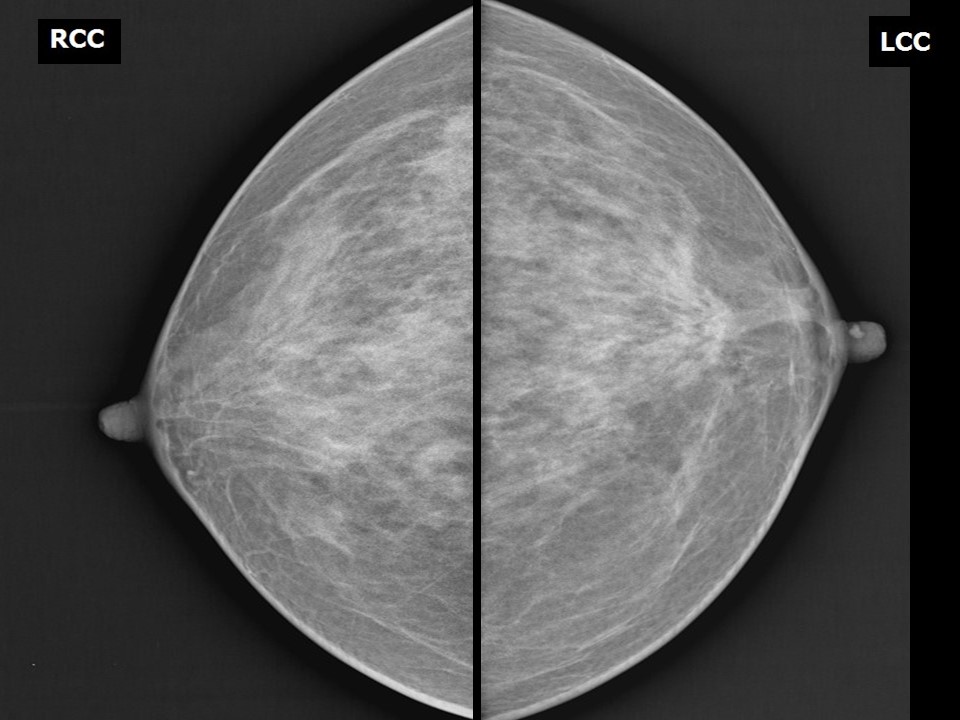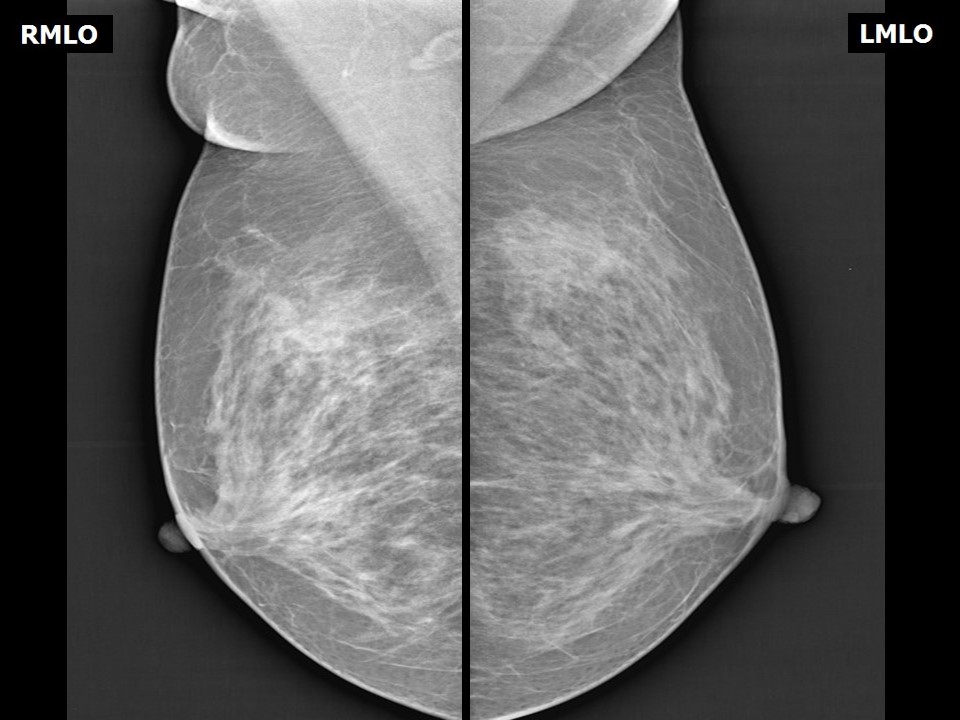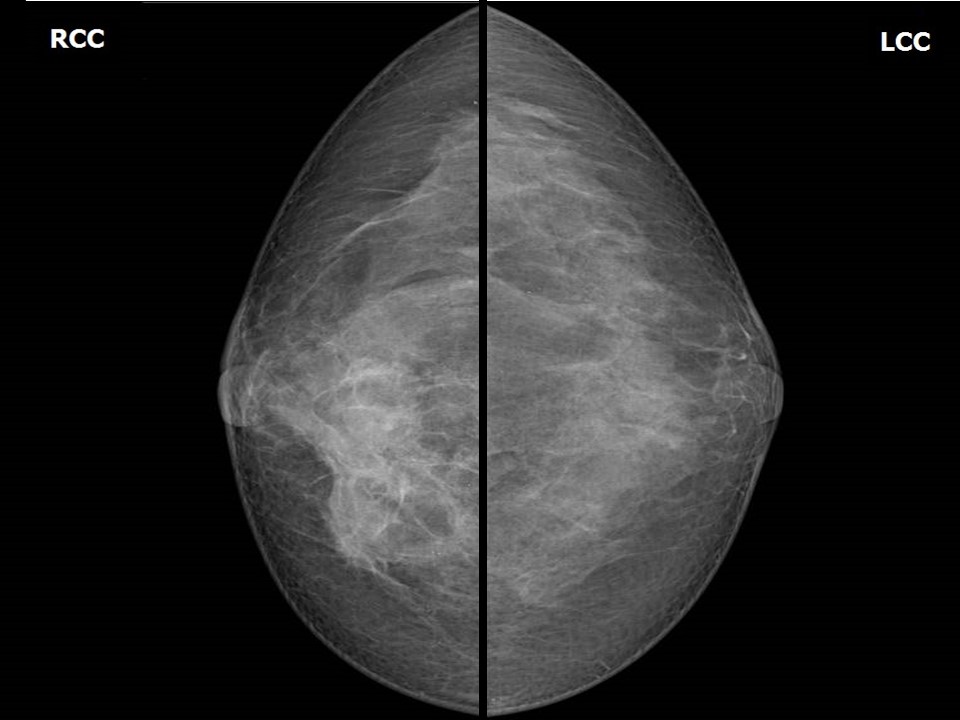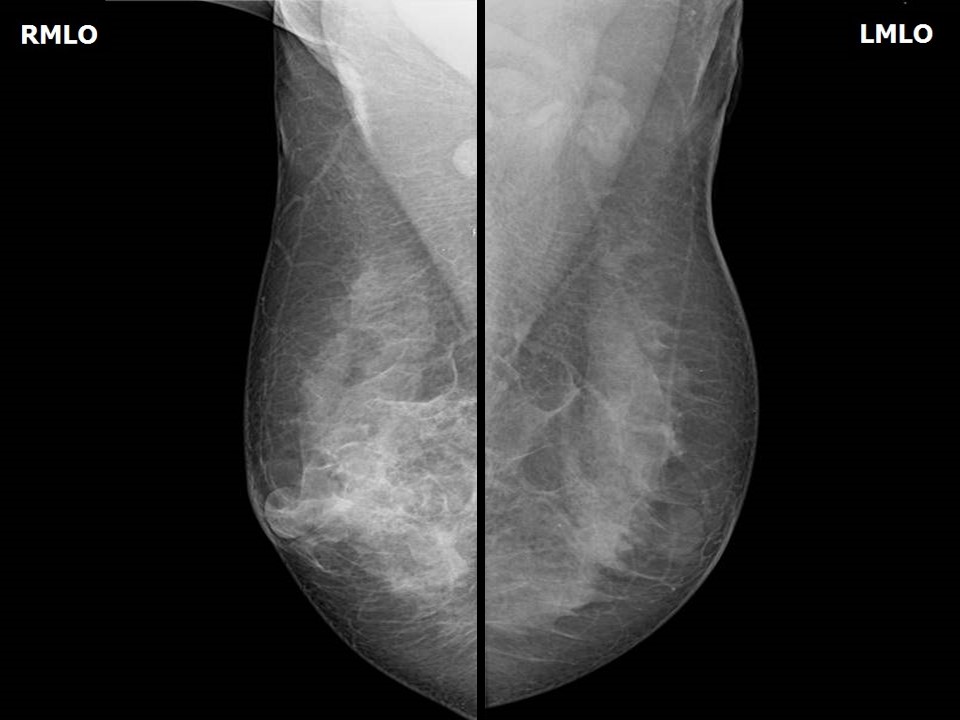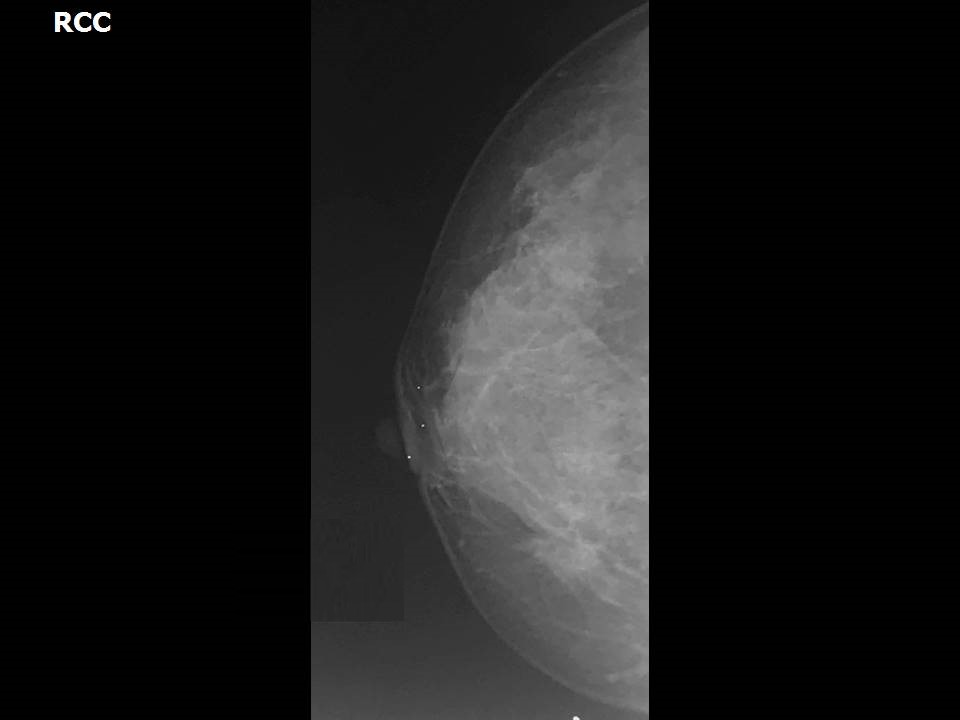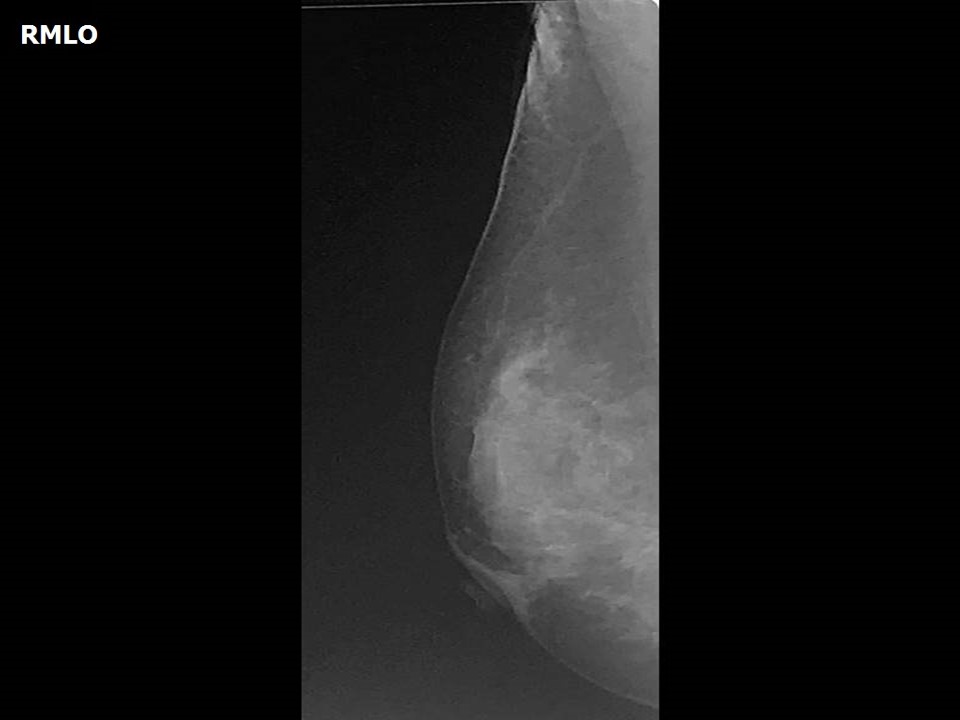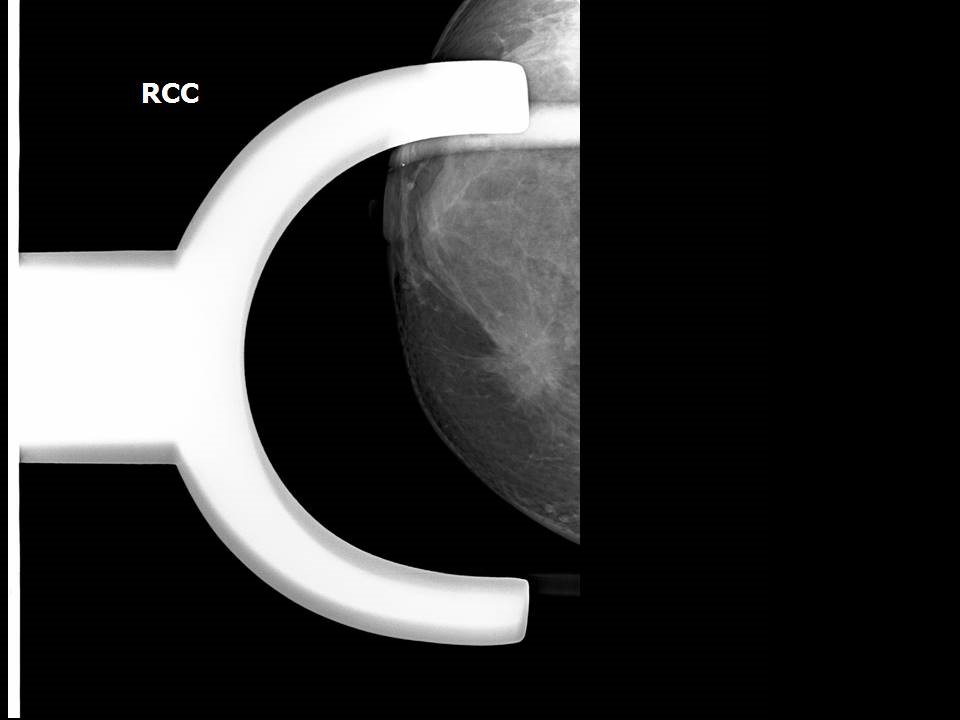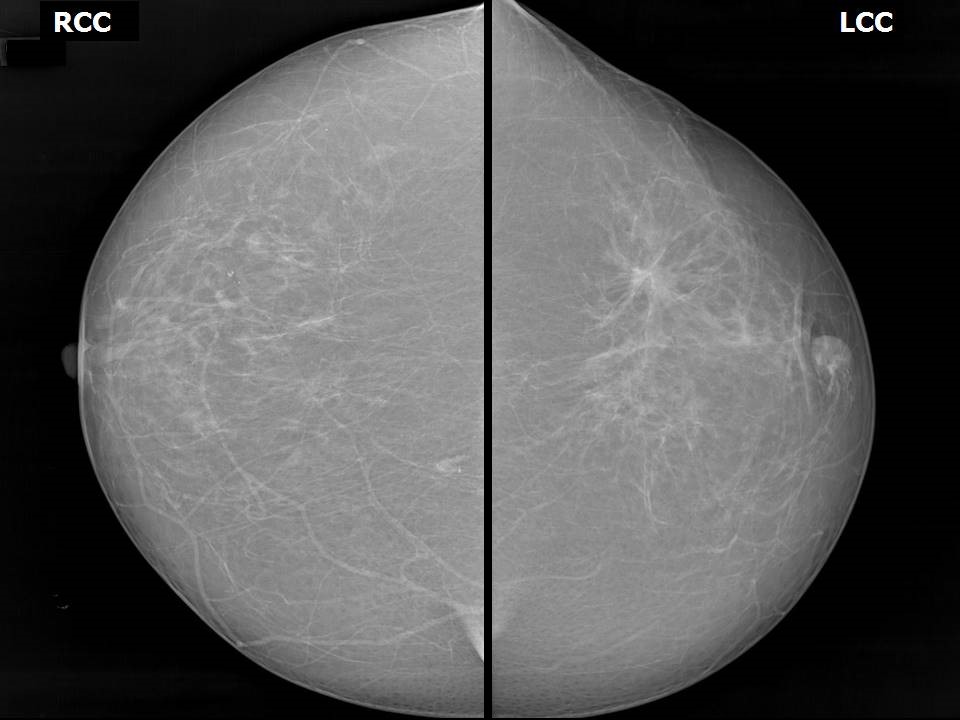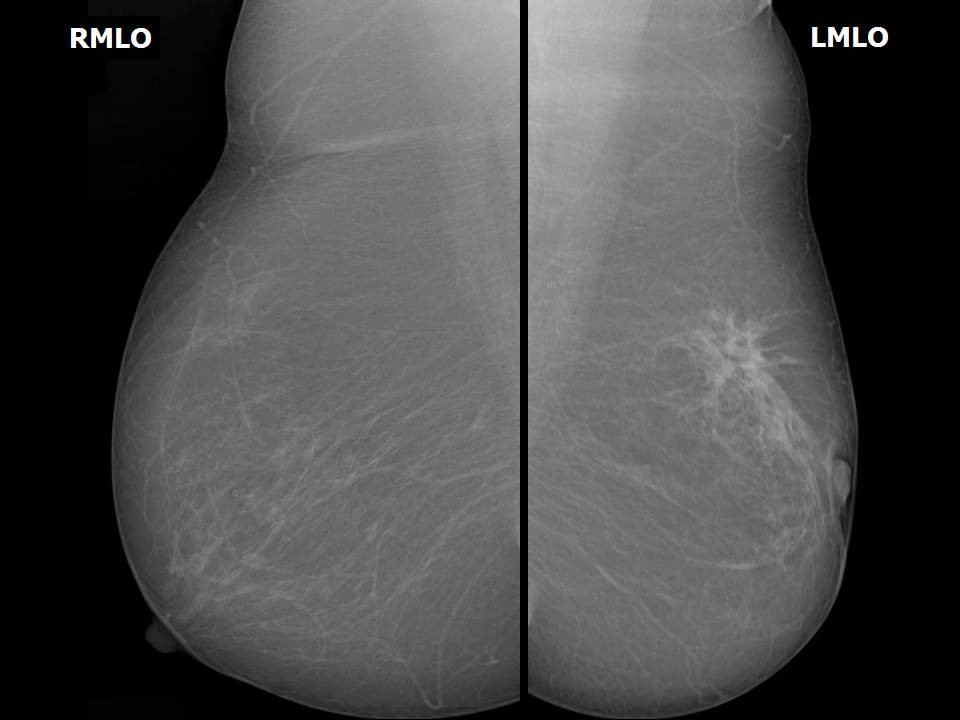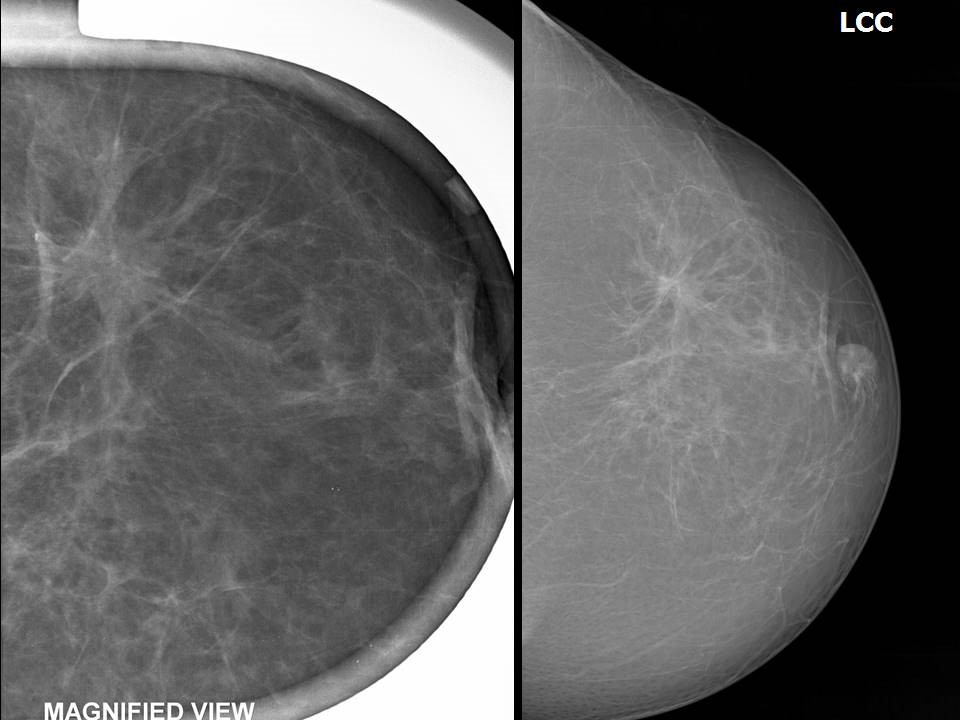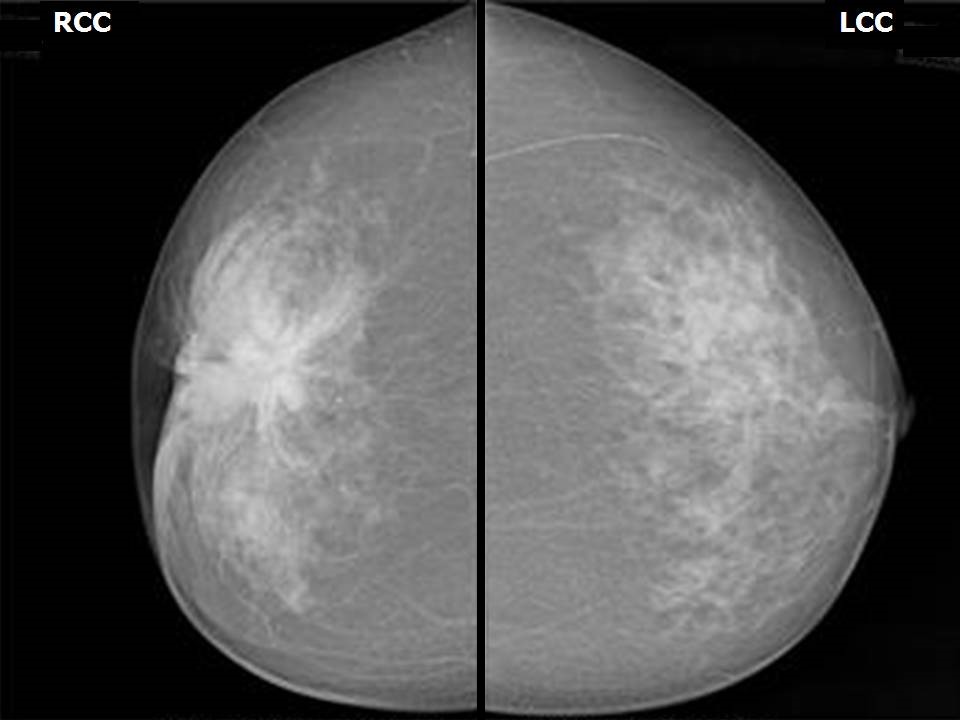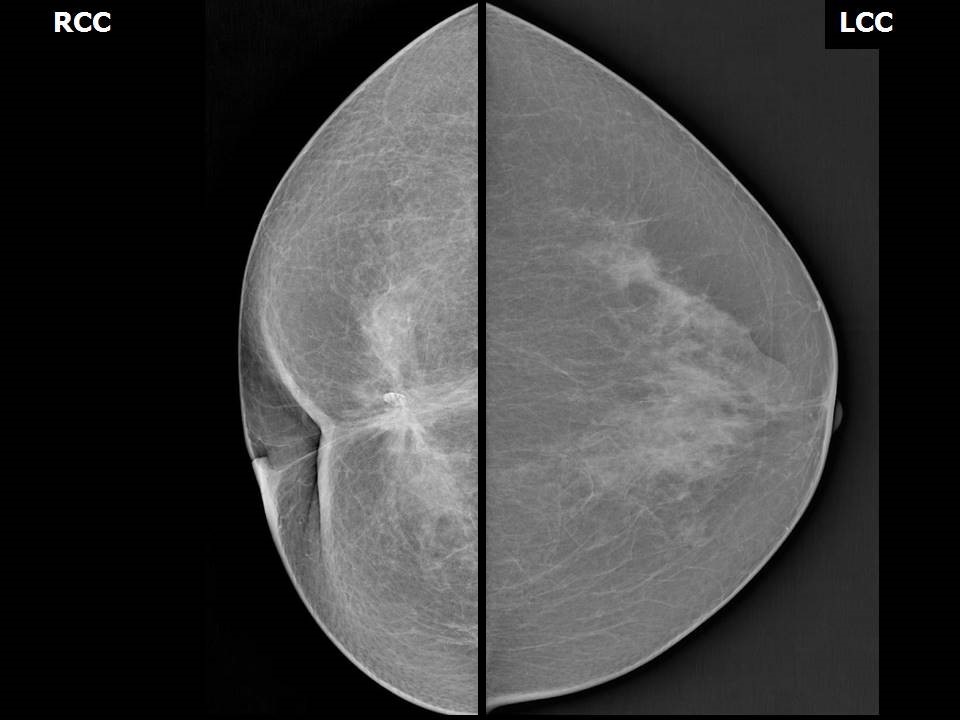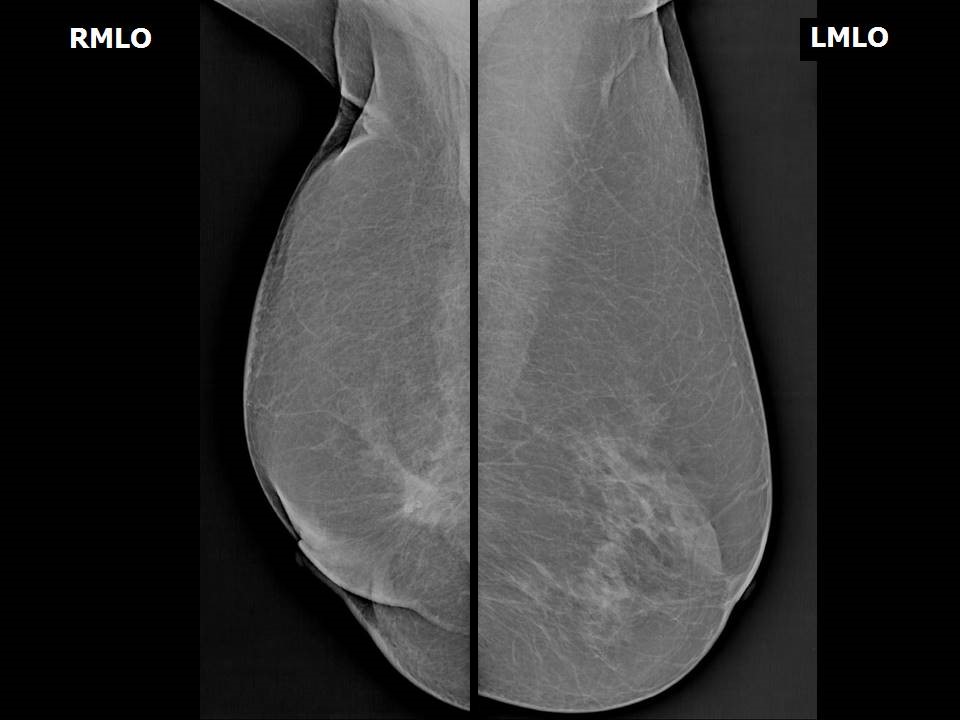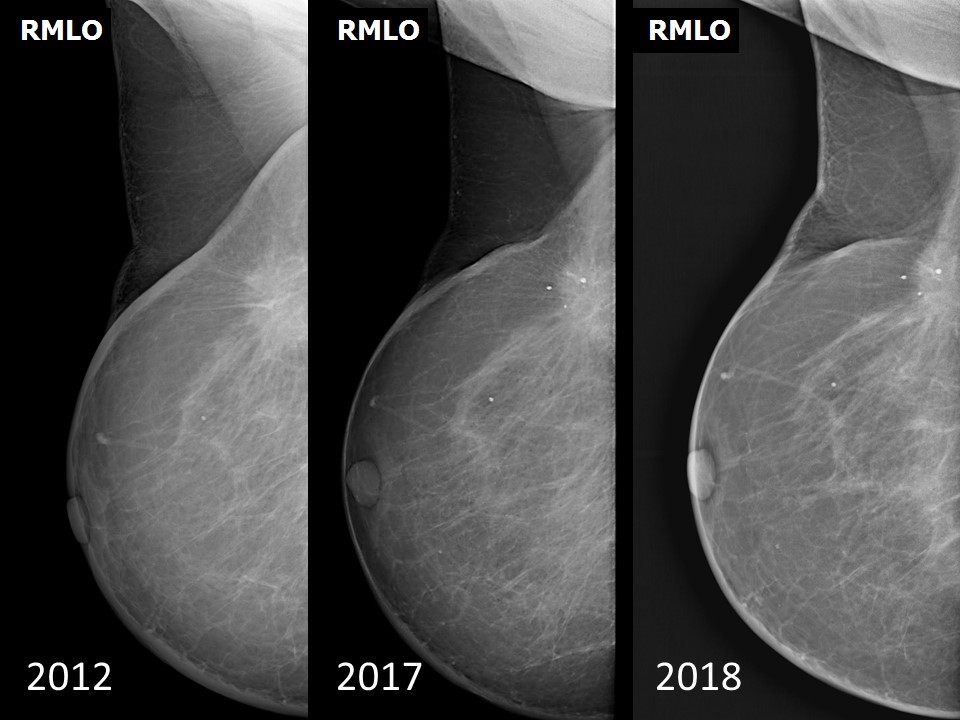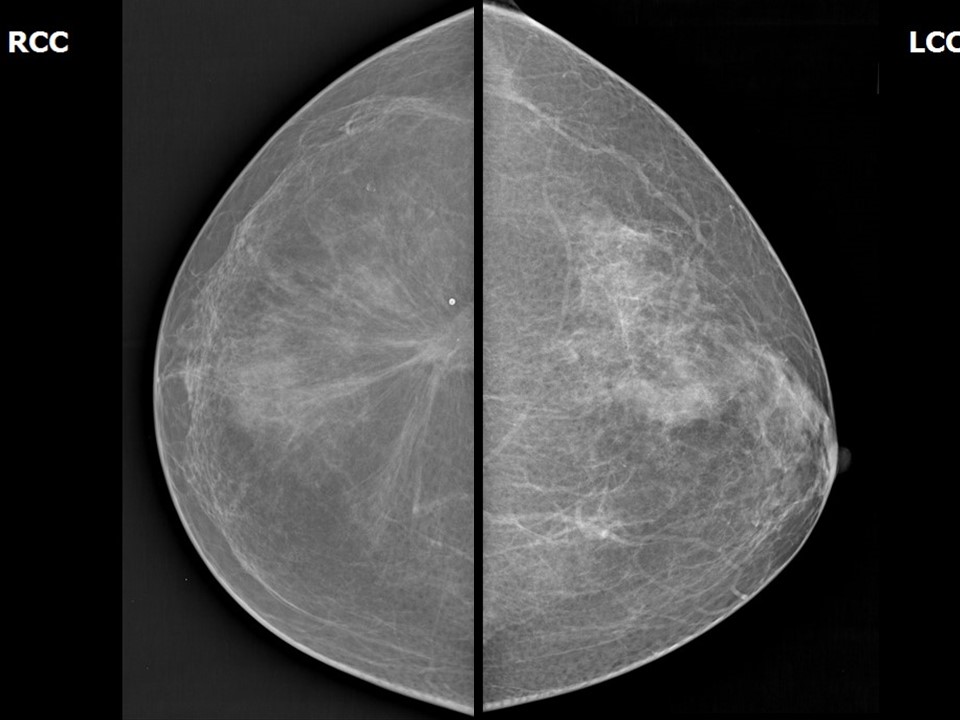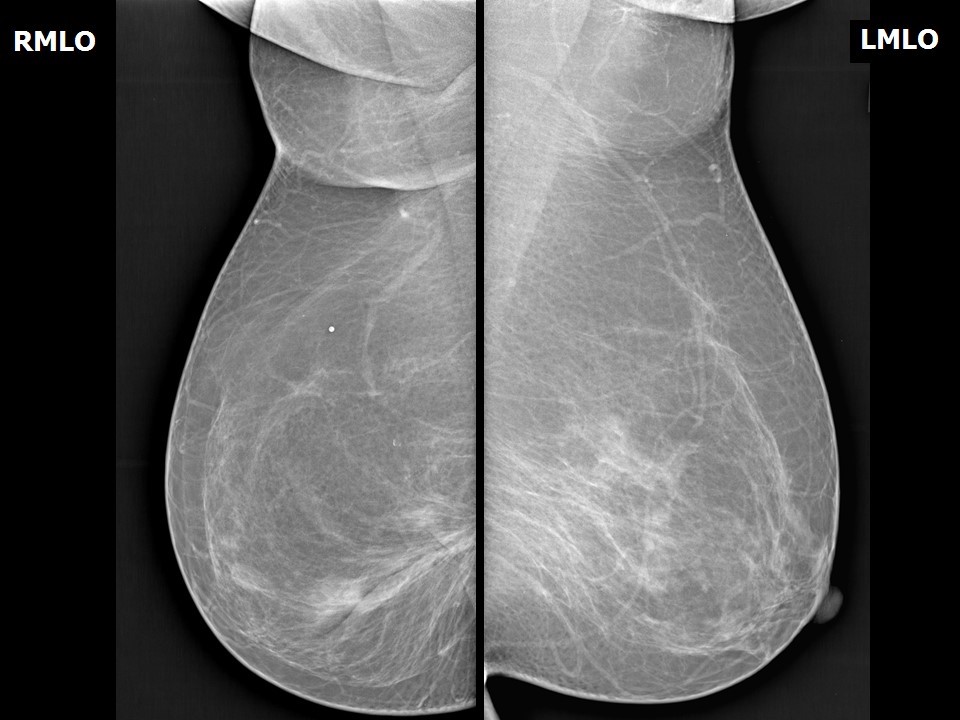Breast glandular parenchyma on a normal mammogram is seen as evenly placed structures directed towards the nipple. The vessels in the breast and supporting ligaments of Cooper, which produce scalloped surface at the edge of the normal parenchyma, can also be seen.
Architectural distortion is seen as disturbance of the normal flow of structures in the breast parenchyma and should be evaluated as a finding suspicious for malignancy, especially if there is no history of previous surgery. It may be a primary finding on mammography without any mass lesion or it may be associated with a mass or calcifications. The most common non-malignant cause of architectural distortion is postsurgical scarring.
Loss of normal edge undulations
When the parenchymal edge is pulled in with loss of normal edge undulations, it is known as the “edge” or “tent” sign. It may be seen on a single view on the mammogram.
Focal retraction
Architectural distortion seen as focal retraction on detailed viewing may reveal the mass lesion that has retracted the focal parenchyma.
Spiculations or lines radiating from a point
Architectural distortion can also be seen as spiculations radiating from a point. This is highly suspicious for malignancy  .
Mass with architectural distortion
Architectural distortion may also be seen as a feature associated with an underlying malignant mass lesion  .
Postsurgical architectural distortion
At times, postsurgical scarring may become a fixed architectural distortion with a spiculated appearance. In such cases, it is important to correlate the surgical scar site and the area of architectural distortion. The stability of the spiculated appearance on serial follow-up mammogram will rule out the possibility of recurrence. Biopsy can be performed to rule out malignancy  .
Postsurgical architectural distortion: Changes over time
| .png)





